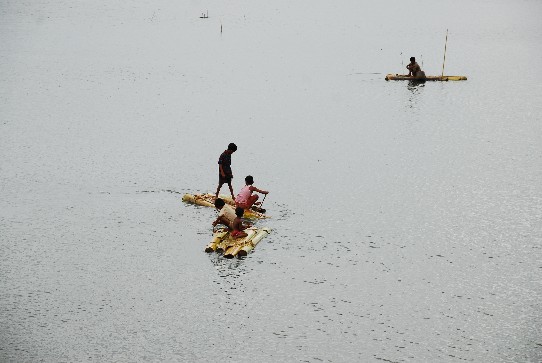
Global Security and Climate Change: The Threats of Sea-Level Rise
Rising sea levels and flooding caused by climate change will have marked consequences on the world’s population, particularly the most impoverished. Consequences will include extensive flooding, leading to the loss of inhabited and arable land. The environmental degradation of already troubled regions will aggravate global conflict as people migrate and their food supplies become threatened. For each of these reasons, climate change is expected to be a major contributor to global conflict.
The decade beginning in 2001 and ending in 2012 was the warmest in the atmosphere on record. Even worse, most of the world’s increased warming has been absorbed by our oceans, melting Arctic ice and accelerating sea-level rise. Global temperatures have the potential to rise 11.5°F by the year 2100 and the sea level could rise by .85 to 2.7 ft or more within the same time span.
The 2014 Quadrennial Defense Review called climate change an aggravator of “poverty, environmental degradation, political instability, and social tensions” that “can enable terrorist activity and other forms of violence”. Existing poverty, population density, ethnic and religious conflict, and heavily militarized borders, when combined with rising sea levels, further exacerbates this unrest.
South Asia is often listed as the most vulnerable to climate change and flooding caused by rising sea levels, particularly the River Deltas. Bangladesh, a country that is composed almost entirely of the deltas of the Brahmaputra, Ganges and Meghna rivers, has a population of over 160 million, making it the 8th most populated country in the world and one of the densest. Predicted sea-level rise over the next 30 years will result in the loss of at least 10% of land. Making the situation worse, the sea level of the Bay of Bengal is rising faster than most anywhere else in the region. The 5.5 million people needing to relocate will have a difficult time in this poor, crowded, and volatile region.
This is a problem around the world. The Mekong River in Southern Vietnam is expected to displace millions and destroy the local rice crops. Millions in Egypt’s Nile Delta region will lose their homes and wheat crops to rising sea levels. Even the major cities in China on the Pearl and Yangtze River Deltas, like Shanghai and Guangzhou, are in danger. This will multiply risks across Asian and Middle Eastern societies as people become homeless and migrate, and agricultural production collapses.
Combine these vulnerabilities with unstable governments, existing religious and territorial wars, and families who already face challenges in feeding their children, and the risks skyrocket. It is not unthinkable to expect terrorist organizations to step in to fill the gaps when traditional governments are slow in responding to environmental threats.
Consequences will be particularly pronounced for citizens, communities, and nations that do not have the resources to relocate to safer areas or to build sturdier infrastructure. Unfortunately, these groups already compose a significant part of the population.
There are measures that can be taken to protect these vulnerable areas. Rather than providing subsidies to create substandard housing without defenses against natural disasters, governments should aid in building stronger infrastructure in at-risk areas and subsidizing homes in low-risk areas. Efforts like these have already decreased the number of weather-related deaths around the world. Some portion of the population will continue to live in high-risk areas, but taking these steps may help to mitigate the risks of flooding.
Adaptation should work in tandem with reducing global greenhouse gas emissions. China, which leads the world in global greenhouse gas emissions, has announced that it is considering a plan to limit its carbon emissions. The U.S. has also made substantial steps to slow emissions, including President Obama’s most recent executive order to cut emissions from power plants 30% by 2030.
These efforts should be the direct work of the U.S. federal government in coordination with foreign governments and international organizations. The G7 recently met to discuss global development and peace in relation to environmental threats. Local communities around the world should also do their part in coordinating with governments to do more to mitigate these risks.
The science is clear: the disastrous consequences of climate change occur constantly as communities struggle to sustain themselves. Rising sea levels are disrupting communities and increasing global tensions. The negative effects are an obvious call to action for the global community.
Photo: Flash flooding in Bangladesh, 2009, Amir Jina






[…] Global Security and Climate Change: The Threats of Sea-Level Rise Kendall Strong […]